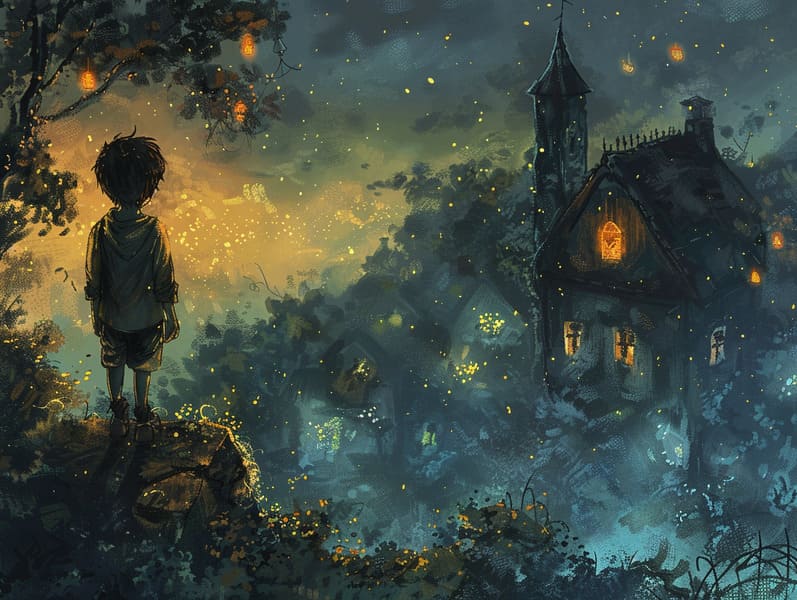The Creation of Old Fairy Tales and Their Consistent Mystique.
The Creation of Old Fairy Tales and Their Consistent Mystique.
Blog Article

Grimm's fairy tales have deep roots. These tales have been conveyed from one generation to the next well before they were ever transcribed. They arose from a variety of civilizations, including Eastern traditions. They were initially passed along among older generations, often carrying themes and messages related to the societal norms and beliefs of the time.
The renowned Brothers Grimm, the two Grimm brothers, were among the first to gather many of these beloved stories. Their volume, "Grimm's Story Collection," included classics like "Cinder Maid," "Hansel and Gretel," and "Schneewittchen," which have since become essentials in the world of timeless fairy tales. Similarly, Hans Andersen's delightful tales, such as "The Mermaid's Tale," and "The Little Duckling," have stolen hearts worldwide, cementing their place in the pantheon of iconic fairy tales.
Though they are centuries old, fairy tales remain as significant as ever, especially as nighttime stories for kids. These delightful tales are now available in different formats, including gorgeously illustrated books, magical animations, and web-based fairy tales.
Their enduring popularity can be ascribed to several charming aspects:
Life Lessons: Classic fairy tales often convey important moral lessons. Tales like "The Story of the Boy Who Cried Wolf" teach the importance of truth, while "The Tale of the Tortoise and the Hare" emphasize the traits of tenacity and humbleness. These stories offer the young clear distinctions between ethical and unethical, forming their moral compass in a soft yet deep way.
Warmth and Understanding: Timeless fairy tales frequently include beings facing obstacles and hardships, prompting audiences to connect with their struggles and boost their triumphs. For instance, "Beauty and Her Beast" teaches us the merit of seeing beyond the surface to comprehend the inner core of a individual, building kindness and insight.
Cultural Awareness: Many traditional fairy tales are interwoven with the cultural contexts from which they developed. Reading these narratives can provide enlightening views into different cultures, enhancing a sense of world respect and acknowledgment.
Creativity and Fantasy: The supernatural elements in ancient fairy tales—talking animals—unleash children’s fantasy worlds. These stories bring readers to imaginary realms, awakening creative dreams and a sense of enchantment that stays a lifetime.
Traditional fairy tales are not only bewitching but also enlightening. They serve as bewitching tools in fostering various intellectual and emotional capacities in children. When fairy tales are told out loud, they foster linguistic abilities by showing new language items and complicated sentence structures. This practice also fosters hearing perception and focus, as children focus on every detail, looking forward to see what here happens next.
Furthermore, exploring the themes and characters of old fairy tales can promote logical thinking and thought processes. Little ones are educated to discern patterns, anticipate outcomes, and comprehend cause and effect. These reflections also boost children convey their thoughts and feelings, enhancing their emotional intelligence.
In today’s digital age, the availability of free fairy tales online has made these narratives more acquirable than ever. Web platforms and applications supply broad selections of popular fairy tales that can be enjoyed or played anytime, anywhere. Fairy tales spoken are particularly well-received, offering an entertaining method for young readers to be a part of these fascinating tales. Voice books and read-out-loud stories guide characters and settings to life, often enhanced by delightful musical scores and melodies that raise the tale experience.
The unfading fascination of classic fairy tales lies in their ability to transform to contemporary times while keeping hold of their underlying messages. Contemporary reimaginings of these narratives often feature more inclusive characters and modern settings, making them meaningful to today’s audience. However, the essential messages of valour, benevolence, and honesty remain unchanged, continuing to strike a chord with young readers of all ages.
Traditional fairy tales also offer a sense of protection and closeness. They allow a coherent narrative with a distinct beginning, middle, and end, often closing with the culmination of conflicts and the triumph of good over bad. This dependability can be reassuring for children, making known a sense of reliability in an ever-changing world.
Classic fairy tales continue to fascinate and instruct new generations, maintaining their fascination and importance in modern society. As bedtime stories for kids, they distribute a perfect blend of wonder and wisdom, encouraging moral values, empathy, and creativity. The existence of internet fairy tales and the sought after status of fairy tales told out loud secure that these old stories remain accessible to new generations.
By conserving and circulating these stories, we continue to admire the rich tapestry of narrative artistry and cultural heritage. Whether you are viewing a beautifully illustrated book, accessing a web collection, or listening through an read-aloud story, the appeal of old fairy tales is always within reach. These tales show us of the consistent essence of tales and its ability to join us across centuries and lands.
No matter if you are perusing a gorgeously illustrated book, accessing a cyber library, or hearing an spoken story, the enchantment of traditional fairy tales is always within reach.
These stories remind us of the consistent presence of fairy tales and its ability to link us across generations and cultures, establishing a link that enchants and educates alike.